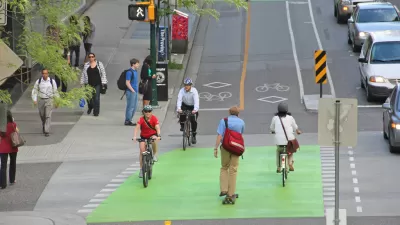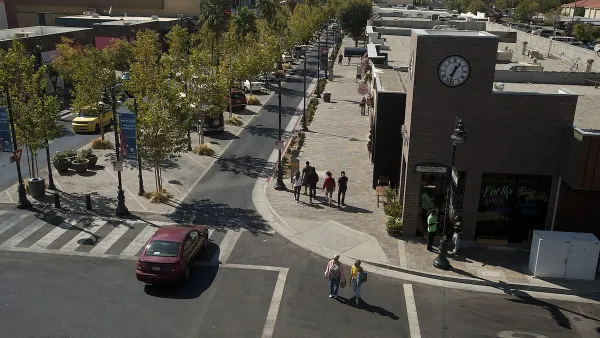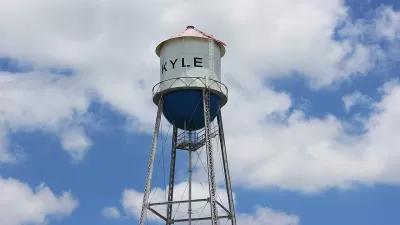Douglas Hausladen, New Haven’s transportation director, envisions building complete streets quickly through a fail-fast approach.

Faced with a long queue of complete streets projects and the prospect of implementing only one a year, Hausladen imagines a different way. Called Complete Streets 2.0, the project will substantially reduce costs by "failing often" via impermanent changes to street space.
Existing roads will be modified to better serve the needs of pedestrians, bicyclists, and buses. "That sounds like a major project, but by doing the job with paint, delineator tubes, and traffic bollards—rather than hard-engineered curbing—[Hausladen] says it can be done for less than $80,000."
If they fail to deliver desirable effects, New Haven can simply reverse the changes. Eric Jaffe reports that amateur "experimental urbanists" already apply extralegal fixes to the urban fabric. Hausladen wants to try out similar approaches officially.
While temporary road markers lack aesthetic appeal, surpassing theory and actually building complete streets might help the model spread.
FULL STORY: The Next Generation of Complete Streets Is Unfolding in New Haven

Planetizen Federal Action Tracker
A weekly monitor of how Trump’s orders and actions are impacting planners and planning in America.

Chicago’s Ghost Rails
Just beneath the surface of the modern city lie the remnants of its expansive early 20th-century streetcar system.

San Antonio and Austin are Fusing Into one Massive Megaregion
The region spanning the two central Texas cities is growing fast, posing challenges for local infrastructure and water supplies.

Since Zion's Shuttles Went Electric “The Smog is Gone”
Visitors to Zion National Park can enjoy the canyon via the nation’s first fully electric park shuttle system.

Trump Distributing DOT Safety Funds at 1/10 Rate of Biden
Funds for Safe Streets and other transportation safety and equity programs are being held up by administrative reviews and conflicts with the Trump administration’s priorities.

German Cities Subsidize Taxis for Women Amid Wave of Violence
Free or low-cost taxi rides can help women navigate cities more safely, but critics say the programs don't address the root causes of violence against women.
Urban Design for Planners 1: Software Tools
This six-course series explores essential urban design concepts using open source software and equips planners with the tools they need to participate fully in the urban design process.
Planning for Universal Design
Learn the tools for implementing Universal Design in planning regulations.
planning NEXT
Appalachian Highlands Housing Partners
Mpact (founded as Rail~Volution)
City of Camden Redevelopment Agency
City of Astoria
City of Portland
City of Laramie





























